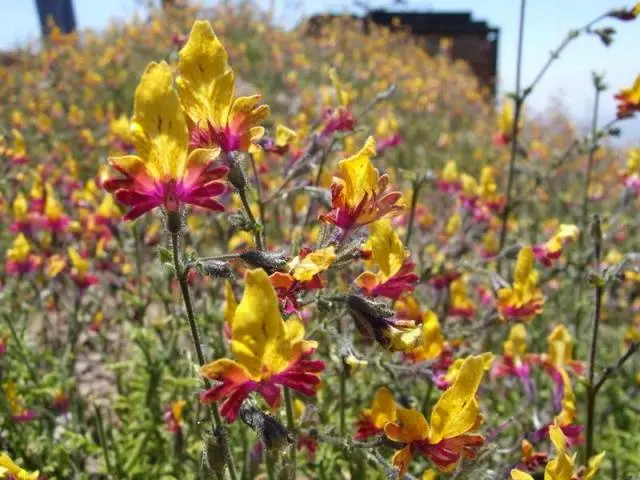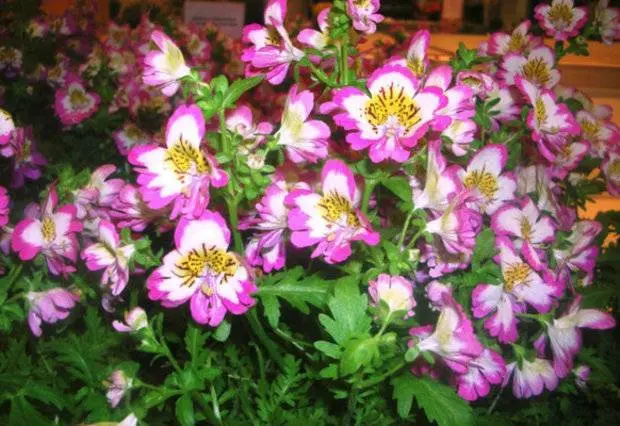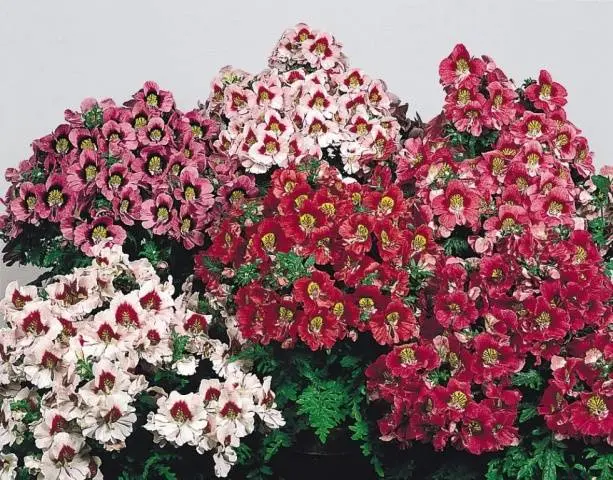Contents
Among the wide variety of garden flowers, someone prefers to plant perennials and not bother with growing seedlings every year. And for some, it is the cultivation of seedlings of annuals in early spring that is the most important sign of the coming spring. And the third, in general, like universal flowers that can be grown both indoors and on balconies, or you can plant them in the garden and admire their flowering throughout the warm period of the year, in order to bring them back into the house.
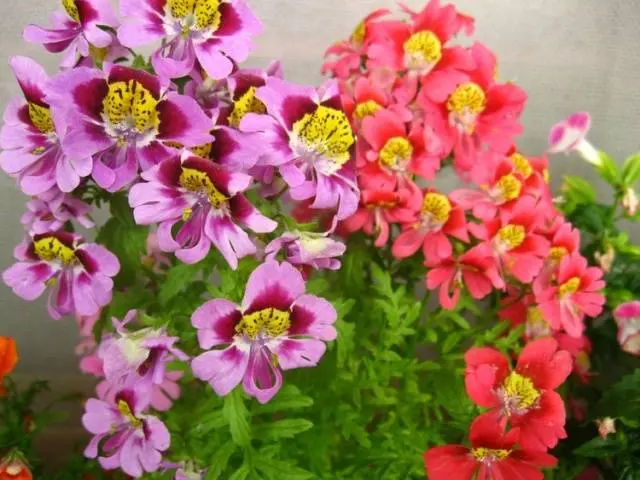
Schizanthus is just such a versatile plant. When grown in the garden, it shows, of course, more abundant and brighter flowering, because it loves sunlight and large amounts of fertile land. But it can be severely damaged by rain and wind. And in room or balcony conditions, the schizanthus may not bloom so colorfully and abundantly, but for a much longer time and the appearance of its flowers will always be impeccable. Among other things, by its nature, it is a biennial, which means that you can admire its flowering for at least two seasons in a row. Schizanthus can be propagated exclusively by seeds. And in growing schisanthus from seeds at home, there are a number of features, which will be mainly discussed later in the article.
Secrets and mysteries of the flower
The botanical name of the schisanthus directly indicates the shape of the flower, since it consists of two Greek words that translate as “split flower”. By the way, the name of the flower is often translated into as schizanthus. It’s just a different transcription of the same name.
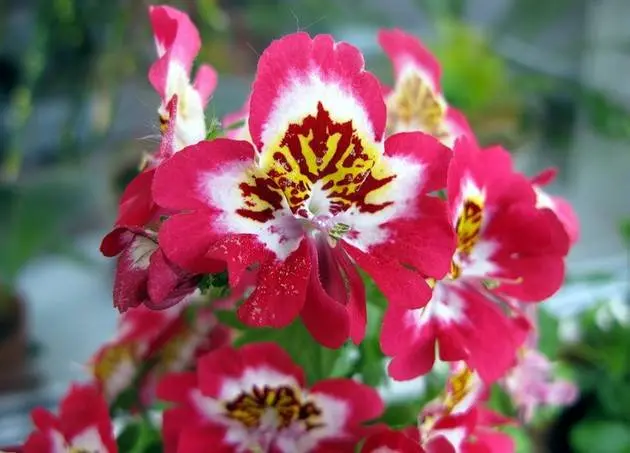
After all, flowers so outlandish in color, reminiscent of the shape and color of exotic beauties of orchids, can be grown from just a small bag of seeds, the cost of which is no different from the seeds of ordinary annuals.
Sometimes the schisanthus is called a butterfly flower. Because of the whole world of insects, only butterflies can boast such a luxurious and fantastically diverse color of wings.
In general, the schisanthus is a truly unique plant, fraught with many more mysteries and secrets, which are not completely solved. For example, it is known that when growing schisanthus seedlings, some of them are far behind in development and look, to put it mildly, “suffocated”. This often happens with other plants, but in schisanthus it is from these plants, the most weakened at the first stage of development, that the most amazing and unique specimens are obtained in terms of coloring and splendor of flowering.

Or another mystery. Why, if the seeds of the schisantus are planted at the end of winter – the beginning of spring for seedlings, then they will bloom no earlier than after 90 days, that is, by the beginning, or even by the middle of summer. And if the same seeds are sown directly into the ground at the beginning of May, then flowering can be expected in two months, that is, at the end of June – in July. Of course, this may be due to the amount and quality of sunlight, which can more than double the development of plants.
Description of plants
The genus Schizantus, as noted above, has nothing to do with orchids, despite some external similarity. It belongs to the nightshade family, which also includes the familiar tomatoes, peppers and potatoes. There are about 11 species in the genus, and all of them originate from the countries of South America, primarily from Chile. Much later, the schisanthus spread to other continents and now it can be found in the wild in South Africa and North America.
The rather delicate and fragile stems of the schisanthus branch very strongly, so that the flower can be used as an ampelous one. The light green leaves are so openwork and lacy that even without flowers, the schisantus looks very attractive. Both leaves and stems are covered with glandular hairs.

In the first month of flowering on the schizanthus, literally a few single flowers open and it begins to seem that everything will be limited to this. But as soon as the flower is well rooted and grows, whole cascades of amazing coloring of flowers will begin to bloom on it, behind which both stems and leaves will completely drown. The stems from thin and fragile turn into thick and powerful and flower stalks can reach a height of 100-110 cm.
In horticultural culture, 2 natural types of schisanthus and one hybrid are most common.
- Graham’s Shizantus (S.grahamii Gill) is a relatively tall species (up to 60 cm) with stiff, almost pubescent, highly branched stems. Natural color – pink-purple-yellow with speckles. Known in culture since 1834.

- Schizanthus pinnate (S. pinnatus Ruiz, et Pav) – a species with strong pubescence of less branched stems. It reaches a height of no more than 45 cm. The natural color is purple with white and yellow spots. Known since 1822.

- Schizanthus Visetonian (Sx wisetoncnsis Low) – a hybrid obtained by crossing the two above species. The hybrid was obtained around 1900. It is his seeds that can most often be found on sale today. They are usually sold in mixtures, so sizes and color variations are quite unpredictable.

And if you collect schisanthus seeds from your plants and try to sow them, you can end up with flowers of a very unusual color.
They are oval-kidney shaped, dark gray or brown in color. Germination can last 2-3 years.
Despite its exotic appearance, the schisanthus propagates quite easily by self-sowing. So in the spring, carefully monitor all the shoots in the flower beds, where the schizanthus bloomed last year, so as not to miss its germinating sprouts and not weed it out, confusing it with some weed plant.
Cultivation from seeds
Since the schisanthus is a biennial in nature, the timing of sowing its seeds is somewhat different from the usual schemes adopted for growing ordinary annuals. Seeds are usually sown in three terms, depending on when you want to observe the flowering of the schisanthus.
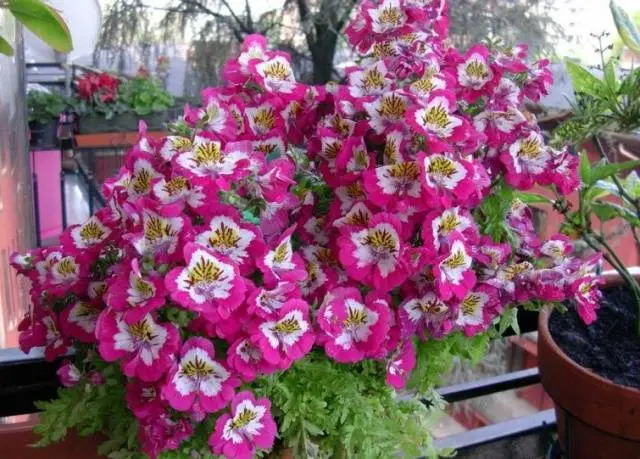
Seeding on seedlings
If you plan to observe the blooming of the schisanthus already in April – May, then the seeds for seedlings must be sown at the end of August – in September. In this case, you will have to keep young plants at home, which is not always easy, but you will be rewarded with early and truly magnificent flowering of the schisanthus throughout the summer.
The flower can also be grown as an ordinary annual – in this case, seeds for seedlings are planted in February – early March. And then flowering can begin in June or July, depending on the care that you can provide to the schisanthus.
The soil for sowing is prepared light, water- and breathable. In ready-made mixtures for seedlings, you can add 1/8 of vermiculite. Plastic containers about 5 cm deep with holes in the bottom are filled with earthen mixture. Schizanthus seeds are sown in small grooves or simply evenly distributed over the surface in order to then sprinkle them with a small layer of earth, 0,5 cm thick maximum. The container is closed with a lid or plastic bag and placed in a place with a temperature preferably not higher than +18°+20°C. It is better to place the container immediately on a bright window sill so as not to miss the first shoots of the flower. When using fresh seeds, they can appear literally 4-5 days after sowing. In the worst case, seedlings can wait up to 25 days.
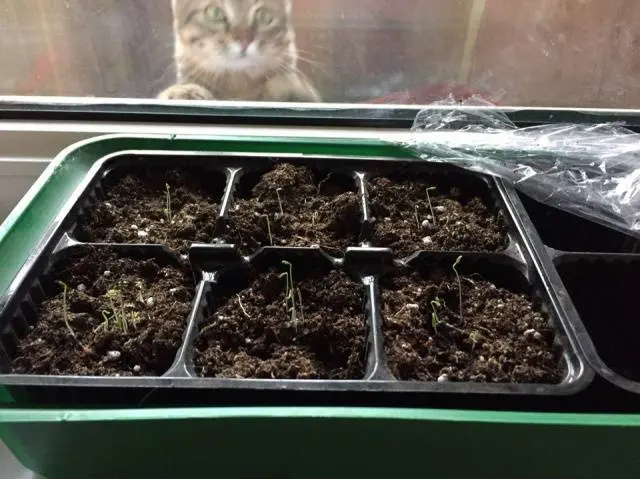
To maintain soil moisture, it is better not to remove the lid or bag until the first two true leaves are unfolded.
After the appearance of a pair of true leaves, the sprouts carefully dive into separate pots or into large containers, keeping a distance of 10-15 cm between plants. Schizanthus does not approve of picking, but if all operations are done carefully, without touching the roots, then everything should end well .
If you decide to sow schisanthus in the fall for spring-summer flowering, then you should take into account the fact that for a successful wintering, it is desirable for plants to create conditions for maximum lighting at the same time as fairly low temperatures. Ideal temperature conditions are +5°+10°С, but the main thing is that the average temperature should not be higher than +18°С. Otherwise, the plants will stretch out a lot and they will have to create even more moisture.
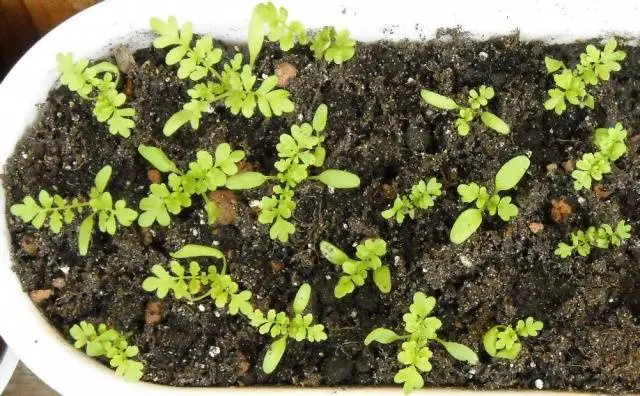
If it is difficult for you to create such conditions in rooms with central heating, then it is better to sow the schizanthus in February, like an ordinary annual.
In this case, almost immediately after the first pick, it is advisable to pinch the schizantus bushes for better branching.
You need to start feeding the plants a week after picking, when you see that they are well rooted. For top dressing, it is desirable to use a complex mineral fertilizer. From the moment the buds are formed on the schisanthus, top dressing should be carried out once every 8-10 days.
In May, as soon as weather conditions allow (the soil and air warm up to + 10 ° C minimum), schisanthus seedlings can be planted in flower beds or flowerpots.

Sowing in open ground and care features
But the schisanthus is such an amazing flower that it can be sown even in open ground at the end of spring and it will have time to please you with its flowering, starting from mid-summer. Seeds are best sown under small shelters in the form of arcs with a film or simply cover the crops on top with non-woven material, such as spunbond. In the southern regions, sowing can be done already at the end of April; in the middle lane, the second half of May will be the best time. The sown seeds are lightly covered with light soil, moistened from above with a sprayer and covered with spunbond. Seedlings may appear within 10-20 days. All this time it is necessary to ensure that the soil in the place of crops remains moist.
If the seedlings turned out to be thickened, then after the formation of a pair of true leaves, young schisanthus can be planted. In the future, you need to regularly water the flowers and feed them.
Another important maintenance procedure for Schizanthus is the removal of fading flowers in order to prolong the flowering period. Periodically, some individual non-flowering shoots should be shortened to support the constant formation of new buds.
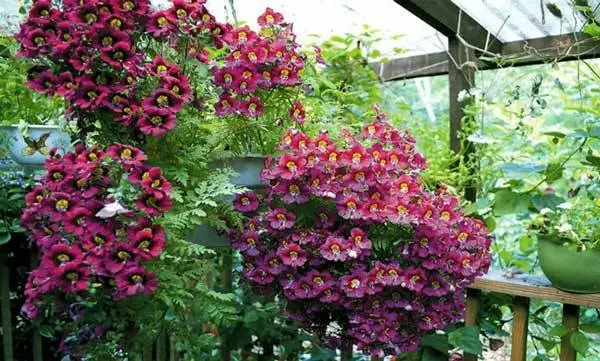
At the end of the summer season, the schisanthus can be moved indoors to prolong its flowering. You just need to remember that for good health, a flower needs cool conditions (+ 15 ° + 18 ° С) and good lighting for at least 12 hours a day.
Florist reviews
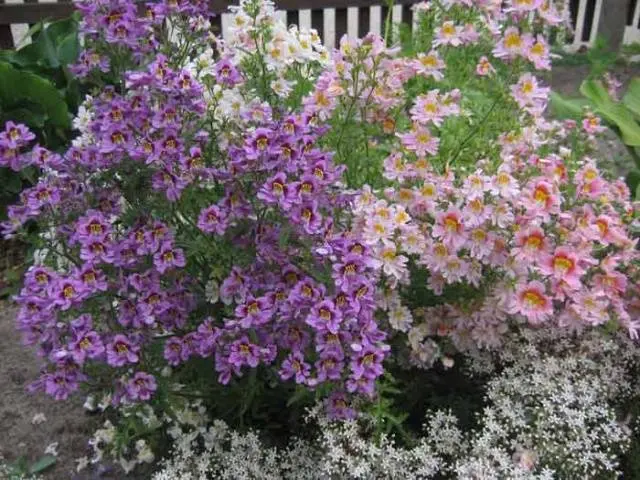
Everyone who has ever tried to grow a schisanthus is not disappointed in their choice, since even the appearance of individual flowers can arouse admiration among inexperienced gardeners.
Conclusion
Schizanthus is a beautiful and unique flower with which you can not only decorate your site, but also surprise your neighbors. He does not have many care requirements, and if you are lucky, he will be able to settle in your garden and recover every year with the help of self-seeding.










